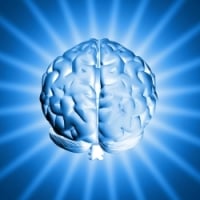Debunking the Left-Brain/Right-Brain Myth

Myths about the brain abound. One such myth, for example, is that we use only 10 percent of our brains. Actually, although we occasionally fall short in our critical thinking, we use nearly every part of the brain, and most of the brain is active most of the time. In fact, the brain is extremely active, even when we’re at rest.
Another brain myth that’s been around for quite a while is that we are each either right-brained or left-brained. If you’re right-brained, so the myth goes, you tend to be more creative and artistic. If you’re left-brained, you’re more logical, methodical, and analytical. Or conversely, if you’re logical, methodical, and analytical, you’re left-brain dominant, and if you’re creative and artistic, you’re right-brain dominant.
This myth has seeped into popular culture and will probably never die. It makes for good party chatter. It neatly captures how our minds work. Not surprisingly, it’s prevalent in the self-help industry. The only thing is that it isn’t true.
What is true is that certain brain functions occur in one or the other side of the brain. For example, language tends to be on the left. Nevertheless, the right hemisphere has a role in some aspects of language, such as intonation and emphasis. Extensive research into the brain has found that people use their entire brain equally. There’s no evidence that we preferentially use either the left or right sides of our brains. And personality traits such as being logical or creative may have nothing to do with which side of our brain we use more.
Therefore, it’s a misconception that everything involved in being analytical is confined to one side of the brain, and everything involved with being creative is confined to the other side. It’s the connections among all brain regions that enable us to be both creative and analytical.
None of this is to discount the fact that the two hemispheres of the brain function differently. As John Medina points out in his book Brain Rules, both sides of the brain are involved in being creative and both sides are involved in being logical. He adds, “That doesn’t mean the hemispheres are equal, however. The right side of the brain tends to remember the gist of an experience, and the left brain tends to remember the details.”
Still, this myth may be relatively harmless as long as it’s not used to channel people into or away from certain careers or as an excuse to undertake or avoid some activity. Saying, “I’m left-brained (or right-brained), so I won’t be good at that” doesn’t hold water. We need to make sure this doesn’t happen in our workplaces so that the myth doesn’t become a self-fulfilling prophecy.

